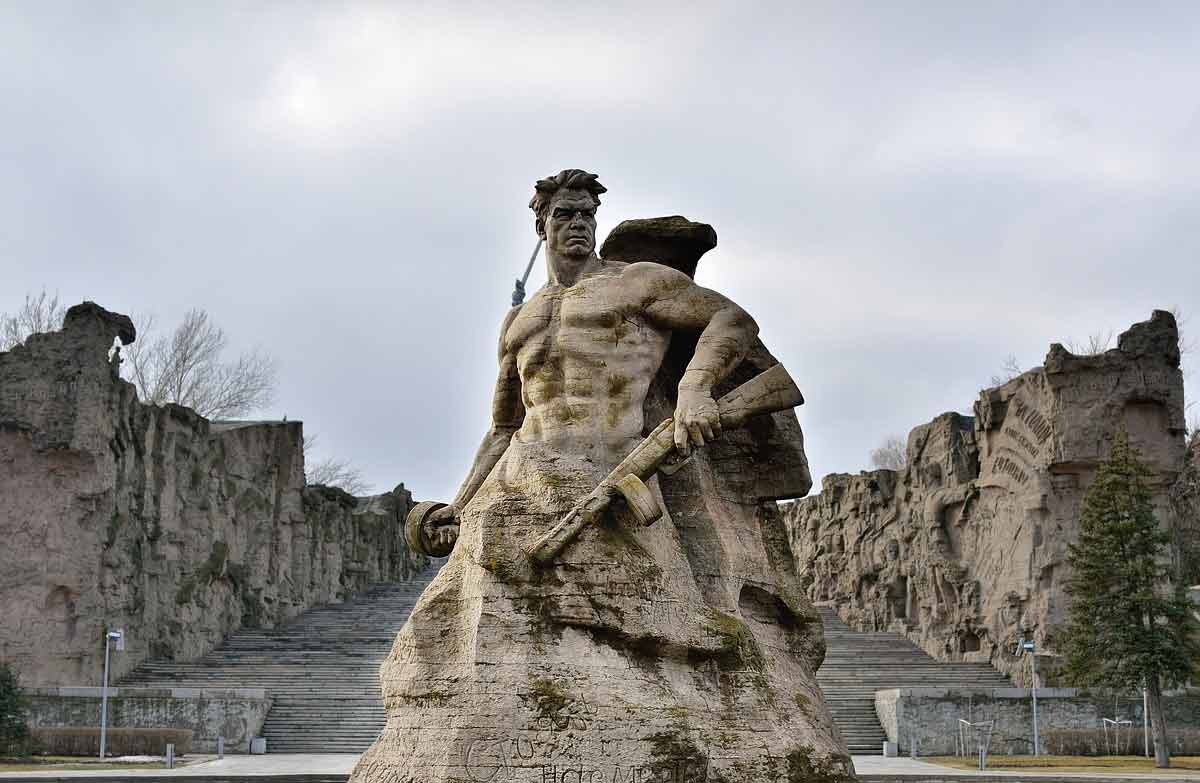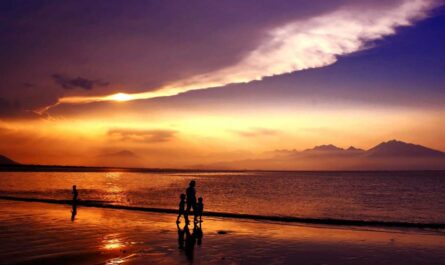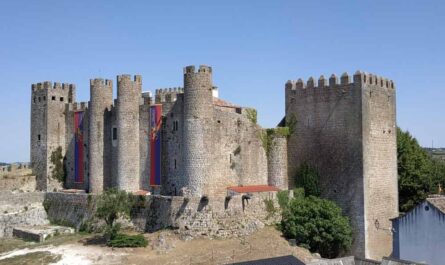We have arrived with many fun facts about Volgograd, Russia! Today, Volgograd is a bustling metropolis that seamlessly blends its rich heritage with modernity. The scars of war have given way to vibrant streets lined with Soviet-era architecture, punctuated by sleek skyscrapers reaching toward the heavens. The echoes of the past reverberate through its museums, monuments, and memorials, serving as poignant reminders of the sacrifices made by those who came before. This article will share some fun facts about Volgograd, Russia. Keep reading.
Nestled along the banks of the mighty Volga River, Volgograd stands as a testament to resilience, history, and the enduring spirit of its people. Formerly known as Stalingrad, this city has a storied past that has left an indelible mark on the annals of human conflict. It was here, amidst the ravages of World War II, that one of the most pivotal battles in history unfolded, shaping the destiny of nations and cementing Volgograd’s place in the collective consciousness of humanity.
Fun Facts about Volgograd, Russia (Soviet Union, USSR)
Volgograd is more than just a city defined by its history; it is a melting pot of cultures, traditions, and influences. From its diverse culinary scene, offering tantalizing flavors from across Russia and beyond, to its thriving arts and music scene, Volgograd exudes a dynamic energy that captivates all who visit. Whether strolling along the tranquil promenade of the Volga River, exploring the depths of its wartime museums, or immersing oneself in the pulsating rhythm of its nightlife, Volgograd promises an experience unlike any other—a journey through time, culture, and the resilience of the human spirit. Here are some interesting facts about Volgograd, Russia.
1. Volga River City
Volgograd, situated on the banks of the majestic Volga River, stands as a testament to the enduring significance of Europe’s longest river. The Volga River has played a vital role in shaping the transportation networks and landscape of the city, serving as a vital artery for trade, commerce, and travel throughout history. Its meandering waters have facilitated the movement of goods and people, connecting Volgograd to distant corners of the vast Russian expanse. The Volga’s presence imbues the city with a sense of vitality and dynamism, offering residents and visitors alike the opportunity to appreciate the natural beauty and historical importance of this iconic waterway.
2. Steppe Region
In the expansive southern Russian steppe region, Volgograd is surrounded by vast grasslands that stretch as far as the eye can see. This unique geographical setting endows the city with a distinctive landscape characterized by rolling plains, sweeping vistas, and abundant natural beauty. The steppe region’s continental climate brings hot summers and cold winters to Volgograd, shaping the city’s environment and influencing the daily lives of its inhabitants. Despite the harsh climatic conditions, the steppe region’s rugged beauty and untamed wilderness offer a sense of tranquility and serenity to those who call Volgograd home.
3. Hero City
Volgograd proudly bears the prestigious title of “Hero City” in Russia, a testament to its indomitable spirit and heroic defense during World War II, particularly the historic Battle of Stalingrad. In the face of overwhelming adversity and relentless enemy aggression, the brave residents of Volgograd demonstrated unparalleled courage and resilience, in Volgograd, Russia, turning the tide of the war and securing victory for the Soviet Union. The designation of Hero City honors the sacrifices made by the city’s inhabitants and commemorates their valiant efforts to safeguard their homeland and preserve the principles of freedom and justice. Volgograd’s status as a Hero City is a poignant reminder of the city’s legacy and commitment to peace, freedom, and democracy.
4. Elevation Changes
Volgograd boasts significant elevation changes, with certain areas affording sweeping views of the mighty Volga River from high cliffs. These dramatic shifts in terrain lend a dynamic and diverse character to the city’s landscape, creating opportunities for scenic overlooks and breathtaking vistas. From the towering cliffs overlooking the Volga, residents and visitors alike can marvel at the majesty of one of Europe’s most iconic rivers, while also appreciating the striking contrast between the city’s urban sprawl and the natural beauty of its surroundings.
5. Renamed City
Originally known as Tsaritsyn, the city underwent significant historical changes and underwent several name changes over the years. In 1925, it was renamed Stalingrad in honor of Soviet leader Joseph Stalin. This renaming reflected the political and ideological shifts of the time, symbolizing the city’s alignment with the principles of socialism and the Soviet regime. However, in 1961, following Stalin’s death and a period of de-Stalinization under Nikita Khrushchev, the city was once again renamed, this time as Volgograd, to emphasize its location on the banks of the mighty Volga River. These name changes serve as a testament to the city’s evolving identity and its pivotal role in shaping the course of Russian history.
6. Battle of Stalingrad
Volgograd witnessed one of the most brutal and decisive battles in human history, the Battle of Stalingrad, which raged from 1942 to 1943 during World War II. This pivotal confrontation between Soviet and German forces marked a turning point in the war, as the Soviet Union successfully repelled the Nazi invasion and inflicted significant losses on the German army. The battle’s ferocity and scale resulted in immense human suffering and destruction, with both sides enduring staggering casualties. The Battle of Stalingrad has since become synonymous with heroism, sacrifice, and resilience, serving as a testament to the indomitable spirit of the Soviet people in the face of adversity.
7. Mamayev Kurgan
Mamayev Kurgan stands as a powerful symbol of courage and sacrifice, commemorating the heroism of the Battle of Stalingrad. This monumental sculpture complex is a must-see attraction in Volgograd, drawing visitors from around the world to pay homage to the brave soldiers who defended the city during one of the most pivotal battles of World War II. Perched atop a historic hill overlooking the city, Mamayev Kurgan is adorned with towering statues and poignant monuments that tell the story of the battle’s triumphs and tragedies. From the iconic “Motherland Calls” statue to the somber “Grieving Mother” monument, with facts about Volgograd, Russia, each sculpture pays tribute to the indomitable spirit of the Soviet soldiers who fought and died for their homeland. A visit to Mamayev Kurgan is a deeply moving and unforgettable experience, offering a profound insight into the human cost of war and the enduring legacy of those who gave their lives for freedom and justice.
8. Planetarium
Volgograd’s planetarium is a captivating destination that offers both educational and entertaining experiences for visitors of all ages. Here, guests can embark on a journey through the cosmos, exploring the wonders of space and astronomy through immersive shows and interactive exhibits. Whether marveling at the beauty of distant galaxies, learning about the latest discoveries in astrophysics, or experiencing the thrill of a virtual spaceflight, the planetarium offers a unique opportunity to deepen one’s understanding of the universe. With state-of-the-art technology and expert guides, visitors can enjoy an unforgettable cosmic adventure that ignites curiosity and inspires a sense of wonder about the mysteries of the cosmos.
9. Family-Oriented Culture
In Volgograd, family traditions and values hold significant importance, shaping the fabric of community life and fostering strong bonds within households. Families in Volgograd place great emphasis on togetherness, support, and mutual respect, with gatherings and celebrations serving as cherished opportunities for relatives to come together and strengthen their connections. From sharing meals and stories to passing down cultural customs and traditions from generation to generation, families in Volgograd play a central role in shaping the identity and character of the community. Whether celebrating holidays, milestones, or everyday moments, the warmth and closeness of family life are celebrated and cherished in Volgograd, creating a nurturing and supportive environment for individuals to thrive.
10. Religious Diversity
Volgograd boasts a vibrant religious landscape, characterized by a rich tapestry of faith traditions and spiritual practices. While Orthodox Christianity remains the predominant religion in the city, coexisting alongside other religious communities adds to the diversity and cultural richness of Volgograd. From majestic Orthodox cathedrals to mosques, synagogues, and other places of worship, residents and visitors alike have the opportunity to explore and experience a wide array of religious expressions and traditions. This religious diversity contributes to Volgograd’s cultural vibrancy and fosters a spirit of tolerance, respect, and understanding among its diverse population.
11. Developing Transportation Hub
Volgograd’s strategic location along key trade routes between Europe and Asia positions it as a burgeoning transportation hub in the region. With its proximity to the Volga River and well-developed infrastructure, the city serves as a vital link in the transportation network, facilitating the movement of goods and people across vast distances. As investment pours into the development of transportation infrastructure, including highways, railways, and ports, Volgograd is poised to play an increasingly central role in regional and international trade. The city’s emergence as a transportation hub not only spurs economic growth and development but also strengthens its connectivity with global markets, opening up new opportunities for trade and commerce.
12. Entrepreneurial Spirit
Volgograd boasts a flourishing entrepreneurial ecosystem characterized by a growing number of small businesses and startups. Fueled by an entrepreneurial spirit and a supportive business environment, aspiring entrepreneurs find ample opportunities to turn their innovative ideas into successful ventures. From tech startups to retail businesses, the city’s diverse economy encourages entrepreneurship and innovation, driving economic dynamism and job creation. With access to resources, mentorship, facts about Volgograd, Russia, and networking opportunities, entrepreneurs in Volgograd are empowered to pursue their passions, take risks, and contribute to the city’s economic prosperity. As the entrepreneurial landscape continues to evolve, Volgograd emerges as a vibrant hub of innovation and creativity, fueling growth and innovation across sectors.
13. Focus on Law and Order
Maintaining law and order is a top priority for Volgograd, with the city taking proactive measures to ensure the safety and security of its residents and visitors. Through effective law enforcement, community policing initiatives, and crime prevention strategies, Volgograd works tirelessly to create a safe and welcoming environment for all. Police presence is visible throughout the city, deterring criminal activity and fostering a sense of security among the population. Additionally, partnerships between law enforcement agencies, local government, and community organizations play a crucial role in addressing public safety concerns and promoting cooperation among stakeholders. By prioritizing law and order, Volgograd enhances quality of life, instills confidence in its residents, and cultivates a thriving and resilient community.
14. Industrial Center
As a major industrial center, Volgograd plays a pivotal role in Russia’s economy, particularly in sectors such as heavy machinery, shipbuilding, and oil refining. The city’s strategic location along the Volga River, coupled with its abundant natural resources and skilled workforce, has made it a hub for manufacturing and industrial production. From towering factories and shipyards to state-of-the-art refineries and industrial complexes, Volgograd’s industrial sector drives economic growth and provides employment opportunities for thousands of residents. With a legacy of industrial excellence and a commitment to innovation, Volgograd continues to be a driving force in Russia’s industrial landscape.
15. Tech Industry Growth
In recent years, Volgograd has witnessed significant growth in its tech sector, with a burgeoning community of startups and companies specializing in software development and innovation. Fueled by a talented pool of tech-savvy professionals, entrepreneurial spirit, and a supportive ecosystem, the city is emerging as a hub for technology and innovation in the region. From cutting-edge software solutions to groundbreaking research and development initiatives, Volgograd’s tech industry is shaping the future of technology and driving economic diversification and growth. With a focus on collaboration, facts about Volgograd, Russia, creativity, and continuous learning, the city’s tech sector is poised to make significant strides in the years to come, positioning Volgograd as a dynamic and forward-thinking center of technological excellence.
16. Emphasis on Education
Education is highly valued in Volgograd, with the city boasting a robust academic infrastructure that includes several universities and institutes offering a diverse range of academic programs. From prestigious universities to specialized vocational schools, Volgograd provides students with access to quality education and opportunities for intellectual growth and development. The city’s emphasis on education extends beyond the classroom, with a strong commitment to lifelong learning and continuous personal and professional development. Through innovative teaching methods, research initiatives, and academic partnerships, Volgograd is at the forefront of educational excellence, preparing students to succeed in an ever-changing global landscape and contribute to the advancement of society.
17. Gender Roles
While traditional gender roles may exist to some extent in Volgograd, both men and women play important and valued roles in society, contributing to the city’s development and progress in various capacities. While men may traditionally be associated with certain occupations or responsibilities, women also actively participate in the workforce, academia, and community life, making significant contributions to Volgograd’s social, cultural, and economic fabric. Moreover, there is a growing recognition and appreciation for gender equality and diversity in Volgograd, with efforts underway to promote equal opportunities and empower individuals of all genders to pursue their aspirations and fulfill their potential. As Volgograd continues to evolve and embrace modernity, the city’s gender dynamics are evolving, reflecting a more inclusive and equitable vision for the future.
18. Cultural Events
Volgograd is a vibrant hub of cultural activity, hosting a diverse array of events throughout the year that celebrate the city’s rich heritage and artistic diversity. From colorful folk festivals that showcase traditional music, dance, and cuisine to elegant classical music concerts featuring renowned performers, there is always something exciting happening on Volgograd’s cultural calendar. Art enthusiasts can explore the city’s galleries and museums, facts about Volgograd, Russia, where they can admire works by local and international artists and participate in engaging exhibitions and workshops. Whether attending a theatrical performance, literary reading, or film screening, visitors to Volgograd are sure to find cultural events that cater to their interests and provide memorable experiences that enrich their stay in the city.
19. Strong and Resilient People
The people of Volgograd embody a remarkable strength, resilience, and unwavering spirit that has been forged by the city’s challenging history. Throughout the years, Volgograd has faced numerous trials and tribulations, including the devastation of war and the trials of economic hardship. Yet, despite these hardships, the people of Volgograd have persevered, demonstrating remarkable courage, determination, and solidarity in the face of adversity. Their resilience is evident in their steadfast commitment to rebuilding their communities, supporting one another, and preserving their cultural heritage for future generations. Visitors to Volgograd cannot help but be inspired by the strength and resilience of its people, whose indomitable spirit serves as a testament to the power of human perseverance and the triumph of the human spirit over adversity.

20. The State Museum of the Battle of Stalingrad
For those seeking a deeper understanding of the Battle of Stalingrad, the State Museum of the Battle of Stalingrad provides a comprehensive and immersive exploration of this historic event. Through a diverse collection of artifacts, exhibits, and multimedia presentations, the museum offers visitors a vivid portrayal of the battle’s significance and impact on the course of World War II.
From personal belongings and military equipment to interactive displays and archival footage, the museum brings to life the experiences of soldiers and civilians caught up in the turmoil of war. Visitors can delve into the strategic maneuvers, tactical innovations, and human stories that shaped the outcome of the battle, gaining a newfound appreciation for the courage and resilience of those who endured its hardships. The State Museum of the Battle of Stalingrad is a poignant reminder of the sacrifices made in the pursuit of freedom and the importance of preserving the memory of past struggles for future generations.
21. Central Embankment
Volgograd’s central embankment offers a picturesque setting for strolls and scenic boat rides along the majestic Volga River. With its tree-lined promenades, charming cafes, and panoramic views of the river, the embankment provides a tranquil escape from the hustle and bustle of city life. Whether enjoying a leisurely walk hand in hand with a loved one or admiring the sunset from the deck of a river cruise, facts about Volgograd, Russia, visitors can soak in the beauty of Volgograd’s natural surroundings while immersing themselves in the city’s vibrant atmosphere. The central embankment is not only a popular destination for locals seeking relaxation and recreation but also a must-visit attraction for tourists looking to experience the splendor of the Volga River firsthand.
22. War Memorials
Volgograd is home to several poignant war memorials that honor the sacrifices of those who fought and died during the Battle of Stalingrad. Among the most notable is Mamayev Kurgan, a towering statue complex located on a historic hill overlooking the city. This colossal monument commemorates the bravery and valor of Soviet soldiers who defended Stalingrad, with its soaring statue of “The Motherland Calls” serving as a powerful symbol of victory and remembrance. In addition to Mamayev Kurgan, Volgograd boasts numerous other war memorials and monuments dedicated to preserving the memory of those who perished in the battle, ensuring that their legacy lives on for future generations to honor and respect.
23. Four Seasons
Volgograd experiences the full spectrum of all four seasons, each contributing its unique charm and character to the city’s ambiance. Spring brings vibrant blooms and rejuvenation, as flowers burst into bloom and trees begin to bud, signaling the arrival of warmer weather and new beginnings. The summer months are characterized by long, hot, and sunny days, perfect for outdoor activities and strolls along the riverfront. As autumn approaches, Volgograd is adorned with a kaleidoscope of colors as leaves change hue, creating a picturesque backdrop for seasonal festivities and celebrations. Finally, winter blankets the city in a serene layer of snow, transforming Volgograd into a winter wonderland and providing opportunities for cozy gatherings and winter sports.
24. Ancient Origins
The roots of Volgograd’s history run deep, with evidence of human habitation dating back centuries to the ancient past. The area surrounding Volgograd has been inhabited for millennia, with traces of settlements and civilizations dating back to the 1st millennium BC. From ancient tribes and nomadic peoples to early agricultural societies, facts about Volgograd, Russia, the region has witnessed the rise and fall of numerous civilizations, each leaving its mark on the land and shaping the cultural heritage of Volgograd. Today, remnants of these ancient origins can still be found scattered throughout the city, serving as tangible reminders of Volgograd’s rich and storied past. How AI, ChatGPT maximizes earnings of many people in minutes
25. Rich Ethnic Diversity
Volgograd prides itself on its rich ethnic diversity, with a vibrant population comprising a multitude of ethnicities. Russians, Ukrainians, Kazakhs, Armenians, and numerous other groups contribute to the city’s cultural tapestry, infusing it with a dynamic blend of traditions, languages, and customs. This multicultural mosaic enriches Volgograd’s social fabric, fostering an atmosphere of inclusivity, tolerance, and mutual respect. From colorful festivals and cultural celebrations to diverse culinary offerings and artistic expressions, the city’s ethnic diversity is celebrated and embraced as a source of strength and vitality, reflecting the unity in diversity that defines Volgograd’s identity. Motivation – Mind – Success – Thinking – Productivity – Happiness
26. Volga Fish Cuisine
The bountiful waters of the Volga River provide a rich culinary bounty for the residents of Volgograd, with freshwater fish playing a prominent role in the local cuisine. Staples like Ukha, a hearty fish soup brimming with flavor, and fried Sterlet, a succulent sturgeon delicacy, are cherished dishes that showcase the region’s culinary heritage. Volgograd’s proximity to the Volga River ensures that seafood features prominently on menus throughout the city, with restaurants and eateries specializing in dishes that highlight the abundance of the river’s offerings. Whether enjoyed as a comforting bowl of soup or a delectable main course, Volga fish cuisine is a culinary delight that reflects the city’s close connection to its natural surroundings. Business – Money Making – Marketing – E-commerce
27. Sunflower Seeds
In Volgograd, sunflower seeds have become a quintessential snack, cherished by people of all ages and adding a delightful touch of local flavor to everyday life. Whether enjoyed while strolling along the city’s picturesque riverfront or during leisurely gatherings with friends and family, sunflower seeds are a beloved treat that symbolizes the region’s agricultural heritage. Their satisfying crunch and rich flavor make them the perfect accompaniment to a leisurely afternoon or a bustling social event. From traditional salted varieties to more adventurous flavors, Volgograd offers a diverse array of sunflower seed options to suit every palate, ensuring that this beloved snack remains a cherished part of the city’s culinary culture for generations to come. Health books, guides, exercises, habits, Diets, and more
28. Strong Tea Culture
Tea holds a special place in Volgograd’s culinary and social landscape, serving as a central beverage enjoyed by residents throughout the city. Whether sipped alongside hearty meals or savored during leisurely gatherings with friends, tea is more than just a drink—it’s a cherished tradition that fosters warmth, hospitality, and connection. In Volgograd, tea is often brewed strong and served piping hot, with a variety of flavors and blends to suit every taste preference. From classic black teas to fragrant herbal infusions, the city’s tea culture reflects a deep appreciation for the simple pleasures of life and the importance of sharing moments of relaxation and camaraderie with loved ones. Fitness – Meditation – Diet – Weight Loss – Healthy Living – Yoga
29. Relatively Affordable City
Volgograd stands out as a relatively affordable city compared to other major urban centers in Russia, offering residents a high quality of life without the exorbitant costs typically associated with metropolitan living. From affordable housing options to reasonable transportation fares and dining prices, Volgograd provides a welcoming environment for individuals and families seeking a comfortable and budget-friendly lifestyle. This affordability extends to everyday amenities, cultural activities, and recreational opportunities, allowing residents to enjoy a rich and fulfilling life without breaking the bank. As a result, Volgograd attracts individuals from all walks of life who appreciate its affordability, accessibility, and vibrant community spirit. RPM 3.0 – 60% CONVERSION & Money for Affiliate Marketing
30. Pelmeni
Pelmeni, traditional dumplings filled with meat or vegetables, hold a special place in the hearts and palates of Volgograd’s residents. These savory delights are a beloved staple food in the city, enjoyed by locals and visitors alike for their comforting flavors and satisfying texture. Whether boiled, facts about Volgograd, Russia, fried, or steamed, pelmeni is a versatile and delicious dish that can be found in restaurants, cafes, and homes throughout Volgograd. Often served with a dollop of sour cream or a sprinkling of herbs, pelmeni is a culinary tradition that has stood the test of time, offering a taste of authentic Russian cuisine to all who partake in its savory goodness.
More Interesting Articles




